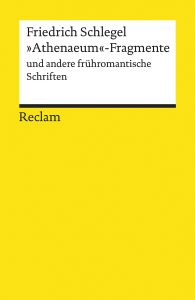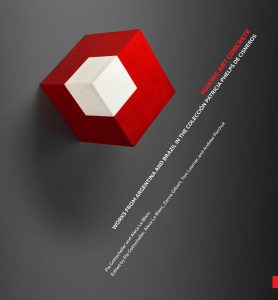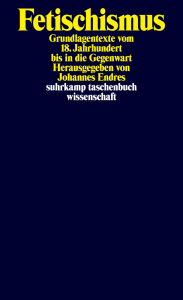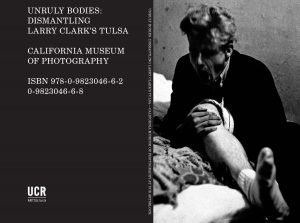 Surrealism at Play
Surrealism at Play
2019, DUKE UNIVERSITY Press
 Surrealism at Play
Surrealism at Play
2019, DUKE UNIVERSITY Press
Susan Laxton, author

Friedrich Schlegel: “Athenaeum“-Fragmente und andere frühromantische Schriften (“Athenaeum“ Fragments and Other Early Romantic Writings: Edition, Commentary and Epilogue)
2018, Stuttgart: Reclams Universal Bibliothek
Johannes Endres, author
Friedrich Schlegel’s critical writings on literature and art played a central role in the emergence of European romanticism as an intellectual movement. The book assembles and annotates the most important of Schlegel’s texts, prior to his conservative turn in 1808. In addition to the texts, which the edition presents according to their first prints (undoing modifications and modernizations previous editions have introduced), the volume also provides extensive explanations of Schlegel’s language and the many references he makes. The epilogue sheds light on the various complexities of Schlegel’s thinking and, following the concept of the Reclam Universal Library, renders it accessible to a wider audience.
 Making Art Concrete: Works from Argentina and Brazil in the Colección Patricia Phelps de Cisneros
Making Art Concrete: Works from Argentina and Brazil in the Colección Patricia Phelps de Cisneros
2017, Los Angeles: Getty Publications
In the years after World War II, artists in Argentina and Brazil experimented with geometric abstraction and engaged in lively debates about the role of the artwork in society. Some of these artists used novel synthetic materials, creating objects that offered an alternative to established traditions in painting—proposing that these objects become part of everyday, concrete reality. Combining art historical and scientific analysis, experts from the Getty Conservation Institute and Getty Research Institute are collaborating with the Colección Patricia Phelps de Cisneros, a world-renowned collection of Latin American art, to research the formal strategies and material decisions of these artists working in the concrete and neo-concrete vein.
Making Art Concrete presents works by Lygia Clark, Willys de Castro, Judith Lauand, Raúl Lozza, Hélio Oiticica, and Rhod Rothfuss, among others, with spectacular new photography. The photographs, along with information about the now-invisible processes that determine the appearance of these works, are key to interpreting the artists’ technical choices as well as the objects themselves. Indeed, this volume sheds further light on the social, political, and cultural underpinnings of the artists’ propositions, making a compelling addition to the field of postwar Latin American art.
This volume is published to accompany an exhibition on view at the J. Paul Getty Museum at the Getty Center September 16, 2017 through February 11, 2018. Making Art Concrete is part of Pacific Standard Time: LA/LA.
 Fetischismus: Grundlagentexte vom 18. Jahrhundert bis in die Gegenwart (Fetishism: Source Texts from the 18th century to the present).
Fetischismus: Grundlagentexte vom 18. Jahrhundert bis in die Gegenwart (Fetishism: Source Texts from the 18th century to the present).
2017, Suhrkamp Verlag (Taschenbuch Wissenschaft): Frankfurt M.
This volume brings together key contributions from the history of fetishism as a cultural practice, discourse and concept. Texts gathered here stem from a variety of fields and disciplines, including ethnography, anthropology, religious history, sociology, the critique of commodification and consumerism, psychoanalysis, gender studies, aesthetics, semiotics and epistemology. These texts, and their selection and presentation in this book, are concerned with a number of questions, which are crucial to the history of fetishism since the 18th century up to the present: Which forces regulate peoples’ relationships to their favorite things? Does the veneration of a piece of clothing repeat an archaic disposition from a remote religious past? Is the commodity fetish a descendant of the idols of the so-called indigenous peoples? Or is the existence of the fetish only owed to the derogatory and misconstrued views of an opaque and alien ‘other’ (the ‘primitive’ people, the childish mind, the bourgeois economy, the pervert)? All texts are carefully introduced and linked to each other through commentaries by the editor, which outline major trajectories of one of the oldest fascinations of humankind – that with the seemingly meaningful objects that it surrounds itself with.
 Friedrich Schlegel Handbuch: Leben – Werk – Wirkung (Friedrich Schlegel Handbook: Life – Work – Reception), Stuttgart: J.B. Metzler, 2017.
Friedrich Schlegel Handbuch: Leben – Werk – Wirkung (Friedrich Schlegel Handbook: Life – Work – Reception), Stuttgart: J.B. Metzler, 2017.
2017, J.B. METZLER: STUTTGART
Johannes Endres, author
Friedrich Schlegel’s life career, from his revolutionary youth over the Jena years up to his catholic conversion, serves as a mirror of the Romantic era as a whole. His theoretical writings laid the groundwork for the idea of Romantic poetry as a “progressive universal poetry”; his historical-critical method helped to establish ‘Literaturwissenschaft’ (literary studies) in the way it is still practiced today. This handbook presents Schlegel’s oeuvre in its entirety, covering, besides his literary and aesthetic writings, his texts and fragments on classical studies, philosophy, the history of European and world literature, history and politics, and art history, including his many-faceted activities as editor, journalist, and prolific letter writer. Additional chapters address terms and ideas pivotal to his work at large, such as Fragment, Irony, Wit (“Witz”), Mythology, Revolution, and Incomprehensibility. The book, which features contributions from internationally recognized Schlegel and Romanticism scholars, is the first comprehensive reference work on one of the most influential spearheads of European intellectual history.
 Unruly Bodies: Dismantling Larry Clark’s Tulsa
Unruly Bodies: Dismantling Larry Clark’s Tulsa
Riverside: California Museum of Photography, 2016
Susan Laxton, editor
Between 1963 and 1971, the photographer Larry Clark shot and filmed his close group of friends, drug addicts in Tulsa, Oklahoma. When the images were published as the photo book Tulsa (1971), the pictures seared the wholesome image of the American heartland with graphic depictions of sex, drugs, and violence. Clark’s exposé was regarded alternately as a wretched narrative of the decline of American youth, accomplished at the expense of the bodies it represented, and welcomed as an artistic watershed of participant observer-oriented personal documentary valued for the photographer’s privileged access to hidden subcultures. Published in conjunction with the eponymous exhibition at the California Museum of Photography, Unruly Bodies seeks to remix Clark’s original story into a critical exhibition that moves beyond sensationalism toward examining the implications of such a photographic project for contemporary life.
